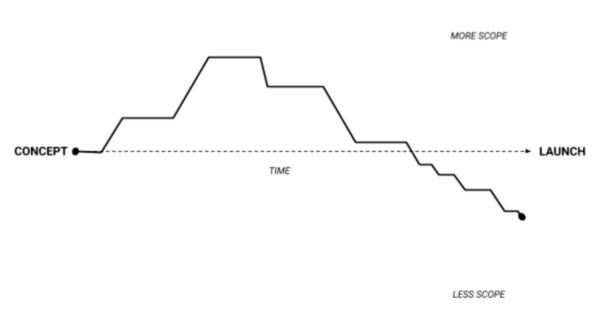Managing Effective Product Launches – Lesson 1
I’ve spent a lot of years in product—almost 15, to be exact. I’m no stranger to the most revered product management resources out there (hello Marty Cagan; hello, Seth Godin; hello Lean Startup). I’m also no stranger to bringing new products and features to market. In addition, I’m no stranger to seeing those product launches fail miserably. Examples include catastrophic bugs, edge cases that (oops) turn out to be use cases, or the maddingly undiagnosable “failure to adopt.”
What’s consistently surprised me is the lack of product management best practices around successfully bringing a product to market, particularly when that product isn’t net-new but is an addition to a product that’s already generating value for a defined user base. I’m not talking about marketing strategy here; I’m talking about choices we as product managers make (or should be making) upfront. Before any notion of minimum viable anything starts to take shape, we need to ensure that what we build has its best chance of delivering meaningful user and business value at launch.
I discovered the value of making these early choices during my three-plus years in product management at Pandora. These years coincided with the most dynamic moment in Pandora’s history—its transformation from lean-back internet radio (circa 2005) to a personalized on-demand powerhouse with the launch of Pandora Premium in 2017.
As a key contributor to this transformation, I realized that I’d spent a lot of my career launching products that represented a long sequence of tradeoffs dictated by time.
If I were to draw the process, it would look something like this:

Instead, I should have been establishing clear boundaries at the outset of a project and managing product decisions against those, which looks more like this:

We drew clear boundaries around Pandora Premium when it was still a nascent concept, and used those boundaries to create the product that ultimately brought in 1 million subscribers in six months. Over the next few weeks, I’ll share three that have stuck with me ever since. I will start with a few insights about knowing your audience.
If your target audience is your entire existing user base, you’re doing it wrong.
When you’re building something within the context of an existing product that has real, actual users, it’s tempting to approach that something assuming that it’s for your entire existing user base. After all, you’ve got a product in market, and it’s succeeding with a specific audience. So, the narrowing has been done already—right?
Once we knew on-demand listening was something we wanted to do, we immediately made a decision about our target audience. It wouldn’t be the entire Pandora registered user base (hundreds of millions of people). It wouldn’t even be our monthly active listener base (75 million people). We distinctly decided to go after Pandora listeners who weren’t already subscribers of Spotify or Apple Music.
This definition allowed us to zero in on the listeners who knew our product well but hadn’t been allured by other services and rapidly iterate against their specific needs. Why did they love Pandora? Why weren’t they interested in Spotify or Apple Music? When combining those two sets of answers, we found our opportunity: on-demand that does the work for you. It’s how we came up with features like pre-populated playlists and taste-aware search algorithms.
If you try going after your broadest sets of users, we won’t find out what matters to them. We likely would have looked to competing services to tell us what to do, instead of pursuing opportunities for breakthrough. As a result, we would have focused on how to be incrementally better than our competitors. For example – “Give Pandora a try! Our background is white, so it’s, like, way better!” In the end, this is how you end up with less-than-incremental results.
About the speaker
Katherine Kornas is VP of Product at Betterment, where she leads growth, mobile, and money movement product teams. Prior to joining Betterment, she was SVP, Product at Havenly, and held product leadership positions at Pandora and Autodesk. Katherine has also worked on product teams at Dictionary.com and GreatSchools. Katherine is a graduate of the University of Michigan and currently lives in New York City